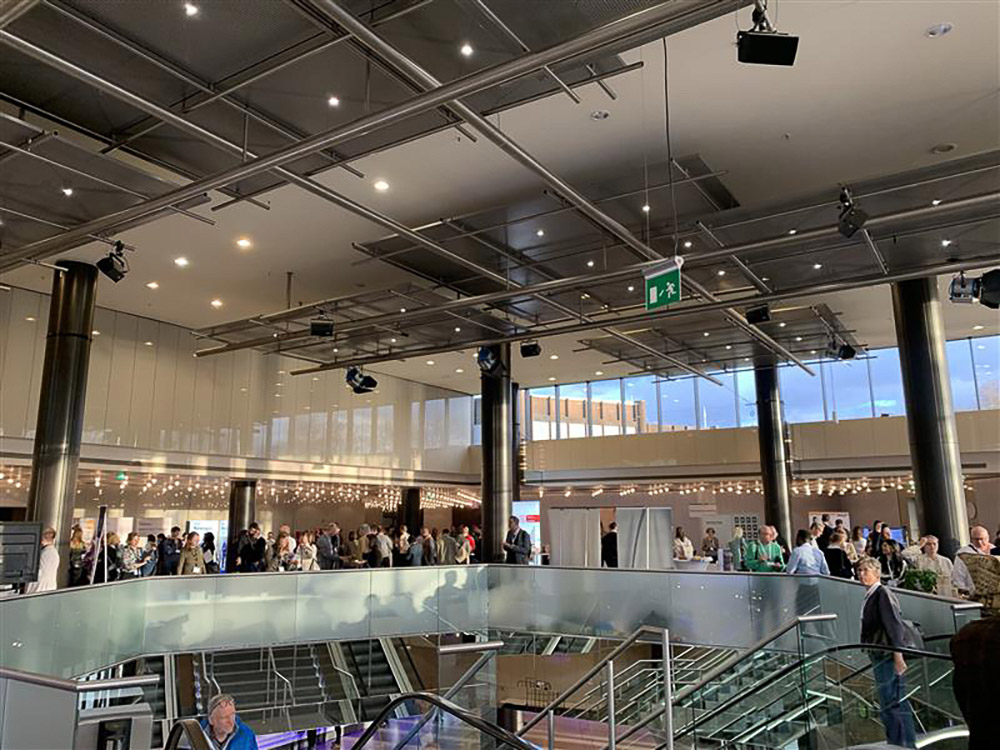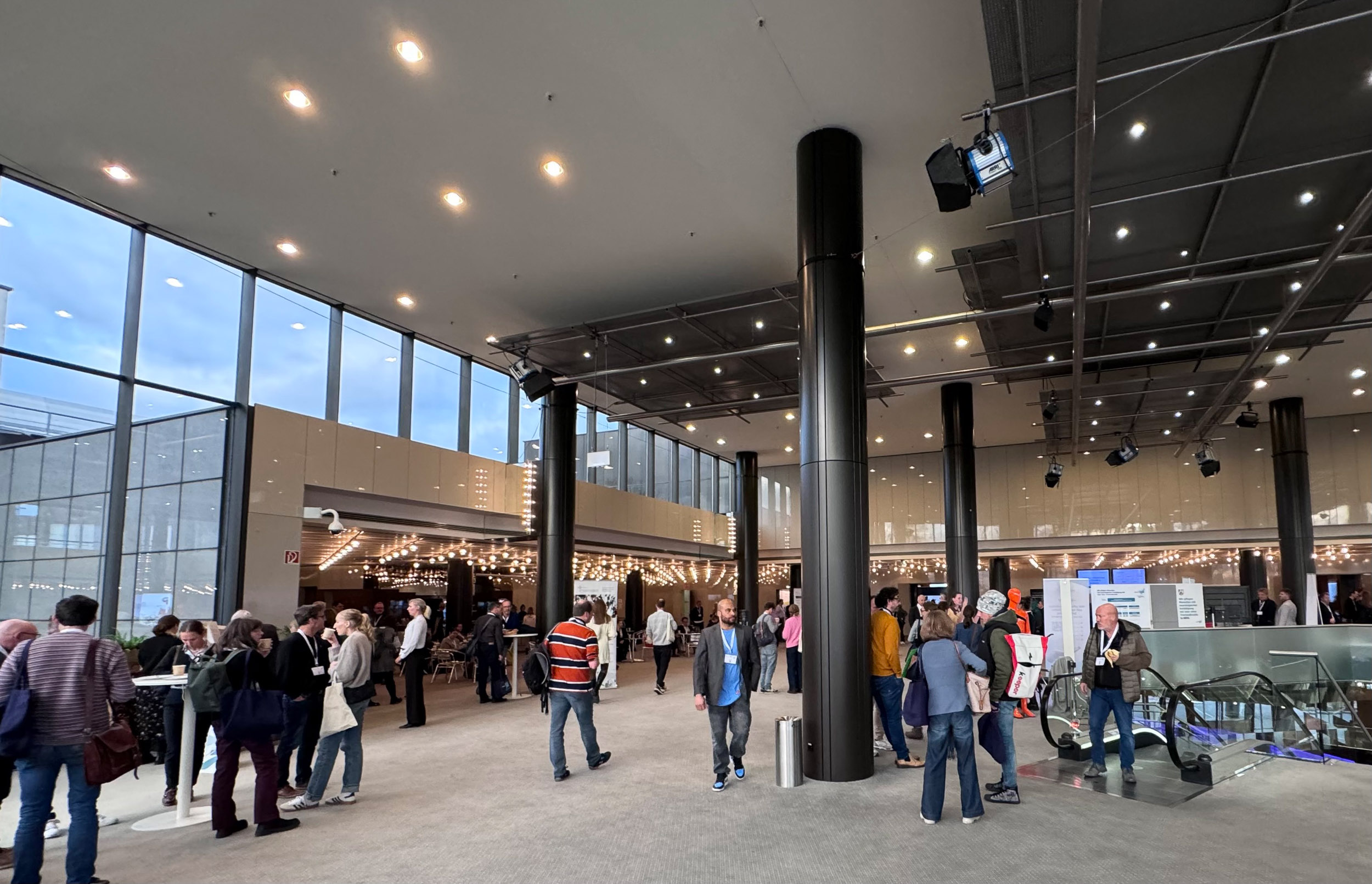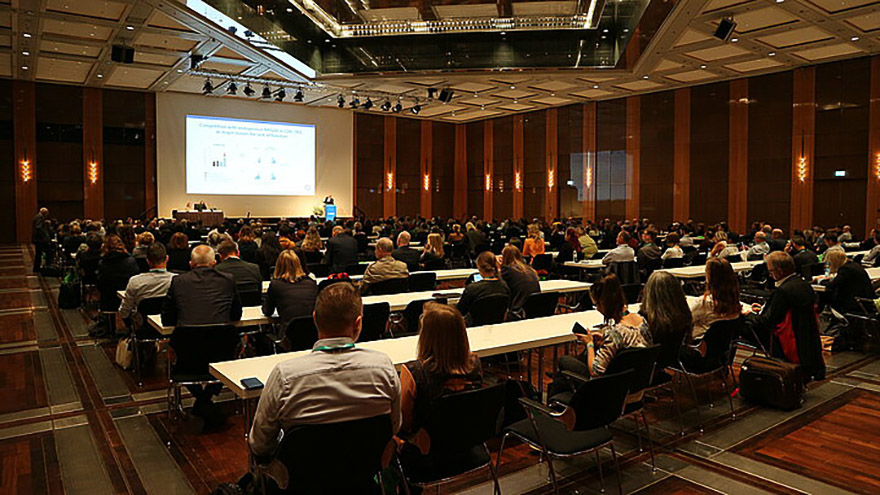
THERAPY Magazin
Review: DGNR Congress 2024
Explore key insights from the DGNR Congress 2024 – from health policy to neurorobotics and digital care. Discover how experts are redefining the future of neurorehabilitation. Let’s keep the conversation going.

Jakob Tiebel
Health Business Consultant
Neurorehabilitation – progress, perspectivesand future directions
The key theme of the DGNR Congress 2024, held from 6 to 8 December in Düsseldorf, focused on shaping the future of neurorehabilitation. Leading experts from medicine, therapy, science and politics came together to discuss groundbreaking developments and the challenges of the coming years.
Key themes and future directions
In this and the coming years, decisions will be made that will significantly influence the future development of neurorehabilitation. The congress focused on two key points, which served as a unifying theme:
In this and the coming years, decisions will be made that will significantly influence the future development of neurorehabilitation. The congress focused on two key points, which served as a unifying theme:

Health policy and hospital planning
The strategic reorientation of hospital planning is expected to have significant implications for neurorehabilitation in Germany. Decisions made in the coming years will affect not only the early rehabilitation of patients with neuro-logical diseases or the weaning from ventilators in hospitals, but also the organisation and quality of all subsequent rehabilitation phases.
The strategic reorientation of hospital planning is expected to have significant implications for neurorehabilitation in Germany. Decisions made in the coming years will affect not only the early rehabilitation of patients with neuro-logical diseases or the weaning from ventilators in hospitals, but also the organisation and quality of all subsequent rehabilitation phases.
Forward-thinking decisions shape the organisation and quality of neurorehabilitation.
The participants at the congress emphasised that these changes could have far-reaching consequences for the entire rehabilitation process – from inpatient care to outpatient and non-clinical services. Political decisions in areas such as resource allocation, personnel planning and infrastructure will play a crucial role in how patients gain access to specialised rehabilitation and how their care is structured in the long term.
A key area of discussion was how these developments can be actively shaped to ensure that high-quality, effective and patient-centred rehabilitation services remain guaranteed, even within a changed care system. It became clear that close cooperation between political decision-makers, medical professionals and healthcare facilities is essential to develop future-proof solutions.
These discussions highlighted the fact that Germany is at a critical juncture, where the groundwork for the future of neurorehabilitation is being laid – potentially influencing not only the national healthcare system but also extending its impact far beyond it.
A key area of discussion was how these developments can be actively shaped to ensure that high-quality, effective and patient-centred rehabilitation services remain guaranteed, even within a changed care system. It became clear that close cooperation between political decision-makers, medical professionals and healthcare facilities is essential to develop future-proof solutions.
These discussions highlighted the fact that Germany is at a critical juncture, where the groundwork for the future of neurorehabilitation is being laid – potentially influencing not only the national healthcare system but also extending its impact far beyond it.
Technological innovations
Technologies such as virtual reality (VR), neurorobotics, digital health applications and artificial intelligence (AI) are rapidly changing the landscape of neurorehabilitation. These innovations open up fascinating possibilities: VR enables immersive training environments that motivate patients and promote neuro-
plasticity. Neurorobotics provide precise movement assistance and feedback for motor rehabilitation. Digital health applications and rehabilitation apps make therapies accessible regardless of time and place, while enabling patients to train independently at home. AI-based diagnostics and therapy adaptation can further improve the efficiency and effectiveness of treatment plans.
What role will rehabilitation facilities play in the future? While rehabilitation apps and digital solutions offer flexible access, it remains unclear whether they can fully meet the complex requirements of many patients. For severely affected patients, personal care and interdisciplinary collaboration in inpatient facilities may continue to be essential.
How will the technology be integrated into existing systems? New technologies require not only investments, but also adjustments to infrastructure and staff training.
Will these innovations be accessible to all patients? The discussion about digital health solutions raises questions of equal opportunities and accessibility, particularly for elderly or less tech-savvy patients.
The future of neurorehabilitation will likely be a hybrid combination of technology and personal care. Digital applications can complement therapeutic offerings, but cannot completely replace them – particularly in complex cases that require an interdisciplinary approach. It also became evident that close collaboration between research and practice is essential for the effective and sustainable integration of these technologies into the care setting.
Neurorehabilitation therefore faces an exciting challenge: striking the right balance between technological advancement and human-centred care to deliver the best possible treatment for patients.
Technologies such as virtual reality (VR), neurorobotics, digital health applications and artificial intelligence (AI) are rapidly changing the landscape of neurorehabilitation. These innovations open up fascinating possibilities: VR enables immersive training environments that motivate patients and promote neuro-
plasticity. Neurorobotics provide precise movement assistance and feedback for motor rehabilitation. Digital health applications and rehabilitation apps make therapies accessible regardless of time and place, while enabling patients to train independently at home. AI-based diagnostics and therapy adaptation can further improve the efficiency and effectiveness of treatment plans.
What role will rehabilitation facilities play in the future? While rehabilitation apps and digital solutions offer flexible access, it remains unclear whether they can fully meet the complex requirements of many patients. For severely affected patients, personal care and interdisciplinary collaboration in inpatient facilities may continue to be essential.
How will the technology be integrated into existing systems? New technologies require not only investments, but also adjustments to infrastructure and staff training.
Will these innovations be accessible to all patients? The discussion about digital health solutions raises questions of equal opportunities and accessibility, particularly for elderly or less tech-savvy patients.
The future of neurorehabilitation will likely be a hybrid combination of technology and personal care. Digital applications can complement therapeutic offerings, but cannot completely replace them – particularly in complex cases that require an interdisciplinary approach. It also became evident that close collaboration between research and practice is essential for the effective and sustainable integration of these technologies into the care setting.
Neurorehabilitation therefore faces an exciting challenge: striking the right balance between technological advancement and human-centred care to deliver the best possible treatment for patients.
Highlights and discussions
The presentations and workshops provided valuable insights into the latest research findings and their practical application. Particularly exciting was the question about the future of inpatient rehabilitation facilities and how they can be integrated with digital offerings.
Companies showcased their latest technologies and devices, including VR systems, AI-supported diagnostics and robot-assisted training equipment, at the accompanying trade exhibition. Many of these innovations were also presented at the trade exhibition, and critically discussed in the workshops and presentations.
These presentations emphasised how closely the future of neurorehabilitation is linked to innovative technologies, personalised approaches and evidence-based care. They demonstrated how research and practice can work together to sustainably improve the quality of life of patients.
The presentations and workshops provided valuable insights into the latest research findings and their practical application. Particularly exciting was the question about the future of inpatient rehabilitation facilities and how they can be integrated with digital offerings.
Companies showcased their latest technologies and devices, including VR systems, AI-supported diagnostics and robot-assisted training equipment, at the accompanying trade exhibition. Many of these innovations were also presented at the trade exhibition, and critically discussed in the workshops and presentations.
These presentations emphasised how closely the future of neurorehabilitation is linked to innovative technologies, personalised approaches and evidence-based care. They demonstrated how research and practice can work together to sustainably improve the quality of life of patients.
Robot-assisted therapeutic procedures: trends and challenges
Jakob Tiebel gave a comprehensive overview of the use of modern computer and robot-assisted therapy methods in neurorehabilitation in a state-of-the-art presentation for the expert committee on neurology of the German Association of Occupational Therapy. In addition to the body of evidence, challenges in practical implementation were highlighted – in each case on the basis of underlying principles of action. He provided an overview of the current state of neurorehabilitation and his outlook on trends, such as personalised robotics and virtual training methods that will influence and shape therapy in the future.
Jakob Tiebel gave a comprehensive overview of the use of modern computer and robot-assisted therapy methods in neurorehabilitation in a state-of-the-art presentation for the expert committee on neurology of the German Association of Occupational Therapy. In addition to the body of evidence, challenges in practical implementation were highlighted – in each case on the basis of underlying principles of action. He provided an overview of the current state of neurorehabilitation and his outlook on trends, such as personalised robotics and virtual training methods that will influence and shape therapy in the future.
Wide range of robotic systems: targeted use
Stefanie Fischer from Bad Homburg discussed the increasingly wide range of robotic systems and raised the issue of which technology is most suitable for which patient. She emphasised that the key to success lies in setting precise goals and adapting the equipment to individual circumstances. Quality assurance standards and training are also essential for therapists, she explained.
Stefanie Fischer from Bad Homburg discussed the increasingly wide range of robotic systems and raised the issue of which technology is most suitable for which patient. She emphasised that the key to success lies in setting precise goals and adapting the equipment to individual circumstances. Quality assurance standards and training are also essential for therapists, she explained.

Structured approaches to gait training
Sabine Lamprecht presented structured approaches for effective gait training geared towards the individual abilities and personal goals of patients. Various options were presented, from treadmill therapy to home visits with targeted balance training. She also initiated a discussion on the role of postural control and the importance of balance training in later rehabilitation phases.
Sabine Lamprecht presented structured approaches for effective gait training geared towards the individual abilities and personal goals of patients. Various options were presented, from treadmill therapy to home visits with targeted balance training. She also initiated a discussion on the role of postural control and the importance of balance training in later rehabilitation phases.
Digital technologies extend the possibilities, but require hybrid care solutions.
End-effector controlled gait training for severe neglect
Prof. Gorsler and her colleagues from Brandenburg emphasised in their presentation how early end-effector controlled gait training can improve walking ability in patients with severe neglect. Progress in trunk stability and balance was discernible, particularly in severely affected patients.
Prof. Gorsler and her colleagues from Brandenburg emphasised in their presentation how early end-effector controlled gait training can improve walking ability in patients with severe neglect. Progress in trunk stability and balance was discernible, particularly in severely affected patients.
S3 guideline on therapy of mobility after stroke
The focus of the presentation by Unger and Dohle (Witten/Berlin) was the S3 guideline on therapy of mobility after stroke (TheMoS), which, in addition to therapy recommendations, is likely to provide concrete implementation concepts for clinical practice in the future. The authors showed that the dissemination and use of evidence-based guidelines in practice is often inadequate. The approaches to implementation that they presented emphasised the need for specific strategies and tools to make the guidelines applicable for therapists, patients and other healthcare actors. The results of a sys-tematic literature review on implementation concepts reinforced the importance of such approaches and provided practical solutions to sustainably improve stroke care. The researchers indicated that, in line with the current ReMoS guideline, a digital version of the guideline should also be made available again. The results and the publication are expected in early 2026.
The focus of the presentation by Unger and Dohle (Witten/Berlin) was the S3 guideline on therapy of mobility after stroke (TheMoS), which, in addition to therapy recommendations, is likely to provide concrete implementation concepts for clinical practice in the future. The authors showed that the dissemination and use of evidence-based guidelines in practice is often inadequate. The approaches to implementation that they presented emphasised the need for specific strategies and tools to make the guidelines applicable for therapists, patients and other healthcare actors. The results of a sys-tematic literature review on implementation concepts reinforced the importance of such approaches and provided practical solutions to sustainably improve stroke care. The researchers indicated that, in line with the current ReMoS guideline, a digital version of the guideline should also be made available again. The results and the publication are expected in early 2026.
Sustainability and outlook
The DGNR Congress 2024 was not only a platform for experts to meet and discuss, but also a clarion call to actively shape the future of rehabilitation. We don’t just want to inform, we also want to make an impact and pave the way for patient-centred, innovative and sustainable neurorehabilitation, the organisation team was keen to stress.
The DGNR Congress 2024 was not only a platform for experts to meet and discuss, but also a clarion call to actively shape the future of rehabilitation. We don’t just want to inform, we also want to make an impact and pave the way for patient-centred, innovative and sustainable neurorehabilitation, the organisation team was keen to stress.
Conclusion and outlook
The congress amply demonstrated that neurorehabilitation faces exciting yet complex challenges. The choices and decisions made today have the potential to fundamentally change care in the coming decades. The DGNR Congress continues to be an essential platform for anyone looking to actively shape the future. It serves as a space for forward-thinking discussions on the synergies between politics, technology and patient-centred care.
Save the date for 2025 to continue the discussion and discover more innovations!
The congress amply demonstrated that neurorehabilitation faces exciting yet complex challenges. The choices and decisions made today have the potential to fundamentally change care in the coming decades. The DGNR Congress continues to be an essential platform for anyone looking to actively shape the future. It serves as a space for forward-thinking discussions on the synergies between politics, technology and patient-centred care.
Save the date for 2025 to continue the discussion and discover more innovations!
Fachkreise
Technology & Development
THERAPY 2025-I
THERAPY Magazine

Jakob Tiebel
Health Business Consultant
Jakob Tiebel is OT and studied applied psychology with a focus on health economics. He has clinical expertise from his previous therapeutic work in neurorehabilitation. He conducts research and publishes on the theory-practice transfer in neurorehabilitation and is the owner of an agency for digital health marketing.
References: